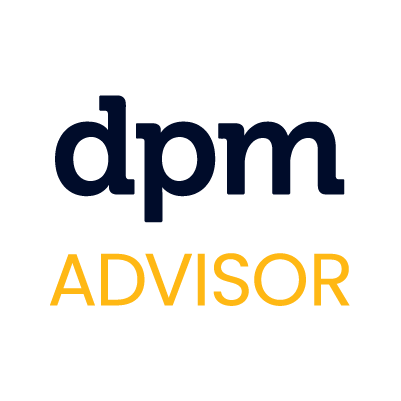If the future of project management is people management, then it stands to reason that any project manager worth their salt should be an expert at mastering project resource management.
In this guide, I’ll introduce effective resource management techniques and share resource management software and best practices to help you put your best foot forward.
What Is Resource Management?
Resource management is the process of forecasting, assembling, and managing the team members, equipment, and other materials needed to execute a project.
Although the term is admittedly icky, a resource is a generic way of describing a person or piece of equipment (e.g. software, hardware) that you need to complete a project. The major types of resources in project management include human resources (services or labor) and equipment or supplies. You could also consider money and time as project resources.
Why Is Resource Management Important?
Resource management is important because it provides the following benefits:
- Satisfied stakeholders: resource management keeps stakeholders happy because the project is scoped and staffed with the right resources
- Engaged team members: project team members are motivated by and engaged in their work, improving productivity, and reducing burnout and/or turnover
- Improved business outcomes: successful project delivery leads to requests for new or repeat business and increased profits
- More transparency: you'll build trust with team members and stakeholders by setting realistic expectations
- Reduced idle time: you'll be able to make sure team members have a balanced work load with minimal idle time
- Better understanding of resource availability: you'll get a better understanding what kind of resources projects typically need so you can plan for future projects
- Better understanding of team member strengths: you'll get a good idea of your team members skill sets and what they like to work on
- Streamlined workflows: you'll be able to reduce inefficiencies, dependencies, and roadblocks in your processes
- More confident decision-making: resource management provides hard data and metrics that you can feel confident in as you make decisions
- Reduced overhead costs: you'll be able to maximize your existing resources and reduce spending on unnecessary resources
- Improved ability to meet deadlines: with the right team members, tools, and processes in place, you'll be able to better meet timelines
The Resource Management Process Step-by-Step
The Project Management Institute defines several key steps in the project resource management process. These include:
- Resource Planning: Define the requirements needed to complete the project. This may involve creating a work breakdown structure or other resource planning visualization.
- Estimate Resources / Resource Allocation: Determine what resources you'll need for project delivery and start allocating resources to specific tasks based on resource availability. Determine how much time team members will devote to the project.
- Acquire Resources: Corral your resources, whether they are internal resources that already exist in your org, or whether you need to find external resources to fill any gaps in skill sets or address shortages.
- Develop and Manage The Team: Foster an environment of psychological safety and constructive feedback. Keep the team motivated and prevent burnout by checking in regularly.
- Continuously Evaluate Resources: Manage the team as they are performing the work. You may need to adjust workloads or change who's assigned to a task as competing priorities or unexpected time off come up.
Resource Management Techniques
No project has an infinite supply of resources. This is because not everyone assigned to a project spends 100% of their time on the project. Calculating resource utilization metrics, or what percentage of time people devote to a project, helps you plan, estimate, and allocate resources effectively. Besides time, other resource constraints include scope and budget.
You can use a variety of different resource management techniques to help you navigate these constraints when managing new projects. I’ll review some of the most common techniques here.
Resource Loading
Resource loading calculates the amount of work you expect team members to perform based on their available capacity, assuming project start and end dates are fixed. Note that capacity should not equal 100%—factoring in paid time off, sick leave, and bathroom breaks, not to mention time for meetings and other disruptions, reduces resource load to ~50% or 60%.
Resource Estimation
You can estimate project resources in two main ways:
- Bottom-up: estimate the number of hours required by team member for each deliverable
- Top-down: using your project budget as a constraint, allocate human resources based on the most critical roles required for project success.
Resource Allocation
To perform resource allocation, you’ll need to:
- Determine what skillsets are required to complete project tasks
- Estimate the number of hours these tasks will take
- Perform resource capacity planning, or determine who will work on what based on forecasted availability and your project roadmap.
There are a variety of resource allocation methods you might consider using.
Resource Scheduling
In the resource scheduling technique, the project schedule is not the primary constraint. Review the results of the resource allocation exercise to schedule project or task start and end dates based on resource availability.
Resource Optimization
Resource optimization techniques balance resource demand with resource supply. The goal of resource optimization is to achieve project goals within a set time frame and budget. Two types of resource optimization include resource leveling and resource smoothing.
Resource Leveling
Similar to resource loading, the first step of resource leveling is to calculate the amount of work you expect team members to perform based on capacity. The primary difference in resource leveling is that project start and end dates are flexible based on available resources.
Resource leveling techniques include:
- Critical path method
- Critical chain method
- Fast tracking
- Resource crashing
Resource Smoothing
When your primary resource constraint is time, meaning your project start and end dates cannot be shifted, you can employ the resource smoothing technique to try to reduce demand while staying within the given time constraints. An example of resource smoothing might be engaging a more experienced person who can complete the work in a shorter amount of time.
Resource Forecasting
Resource forecasting predicts future resource requirements for a project. To refine your forecast and avoid overallocation, schedule periodic project health checks to:
- Compare actual costs against plan
- Ensure team members are performing work aligned to their competencies and interests
- Improve project processes based on learnings
Capacity Planning
Capacity planning predicts whether your existing supply of resources will be sufficient to achieve project objectives in the first place.
Resource Management Best Practices
Here are some resource management best practices, tips, and tricks to keep in mind:
- Be conservative. Things always take longer than we expect them to. Make sure to build in a realistic buffer to account for potential delays
- Document your assumptions. It’s important to clarify what you were thinking when you composed your resource plan. This helps you align with stakeholders on scope and level of effort.
- Monitor and update your plan. Your resource management plan must be a living document for it to remain useful. When the project ends, you can also extract lessons learned that will help you estimate the level of effort for future projects.
3 Ways To Manage Resources
Now that I’ve covered resource management techniques, I’ll go over several tools that you can use to help you manage your project portfolio.
Resource Management Plans
A project resource management plan outlines a strategy for how to allocate, schedule, and engage resources during a project. Resource plans maintain accurate information for project stakeholders at a glance to empower organizational decision-making.
Resource Calendars
Resource calendars show staffing availability and are therefore useful for scheduling project tasks. Project managers should create resource calendars at the beginning of a project and update them regularly as the project progresses and new information is learned.
Resource Breakdown Structures
A resource breakdown structure outlines the resources required to complete a project, typically in the form of a hierarchical outline or tree diagram. Whereas a work breakdown structure shows the tasks required to accomplish project deliverables, a resource breakdown structure lists the people, equipment or other materials, time, and money needed to perform the work.
Developing a resource breakdown structure aligns team members with required tasks to showcase dependencies and improve project workflows.
Tools For Managing Resources
Resource management software is the easiest way to manage your people and assets more effectively and accomplish initiatives more quickly. Read more about why you might use resource management software here.
There are a few different types of software you might use, but the best resource management software for you depends on your specific needs and which stage of the project life cycle you're in. Find more info about each type of software, along with a list of tools and their pricing, below.
- Resource planning software: Use this software in the early stages of your project (ex. the project planning phase) to forecast resource demand and plan who will work on what.
- Resource allocation software: Use this type of software to allocate your resources to specific tasks and monitor the utilization of resources.
- Resource scheduling software: With this software, you can schedule in your resources and ensure you're not double booking or overcommitting your team members (plus try these web-based resource scheduling software options).
- Capacity planning software: Use this software to monitor your team's capacity, account for when competing work requires prioritization, and identify bottlenecks and dependencies.
- Marketing resource management software: This type of software provides specialized resource management tools and automations for marketing teams.
- Free resource management software: If you're on a budget, these software options are free or offer freemium plans for small teams and small projects.
- Open source resource management software: If you need open source software that you can customize to your personal liking, try these options.
Need expert help selecting the right Project Resource Management Software?
If you’re struggling to choose the right software, let us help you. Just share your needs in the form below and you’ll get free access to our dedicated software advisors who match and connect you with the best vendors for your needs.



